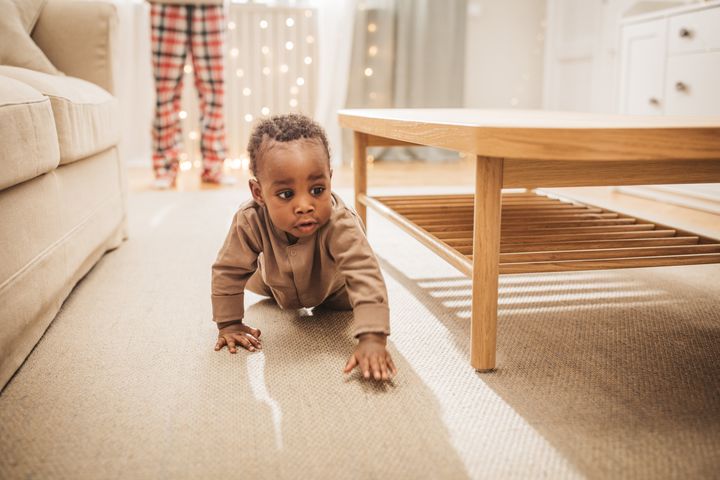
Most first time parents are eager to see their infant start crawling. I mean, it’s the first step towards independence and such an exciting time!
Sharing stories with other parents and seeing videos about babies crawling might make you think your child is developing at a slower pace, especially when you’re comparing to others.
But crawling, like every other development is unique to each baby. Some crawl, some bum shuffle and others go straight to walking and skip the crawling all together!
There are signs you as a parent can look out for which might let you know if your baby is close to crawling. With these signs, you can help to encourage them further.
Signs to look out for
The age range for crawling is quite wide as it’s somewhere between 7 to 10 months, depending on the child. But even if your child is crawling after this, remember this is just a guideline.
Before they even start to crawl you might be able to spot some signs that they are gearing up to get on the move.
Jennie Lannette Bedsworth, a licensed clinical social worker and behavioural therapist, as well as a senior contributor at Start Here Parents has offered parents advice on what exactly they need to look out for.
Firstly, she says you might typically see babies mastering these three skills.
- Pushing up on their arms
- Rocking back and forth on their hands and knees
- Scooting or rolling to get around
My own daughter actually started to army crawl for a week before she went in for the full crawl, dragging her arms across the floor.
Jennie says: “The crawling stage is an important developmental milestone that helps build strength, coordination, and body awareness. As babies crawl, they’re exploring their environments, building cognitive skills, and getting a confidence boost from their newfound mobility.”
She advises not to rush crawling for babies as they will crawl when they are developmentally ready.
However, you can do things to encourage them!
How to encourage your baby to crawl
Jennie advises on lots of tummy time to strengthen core muscles. She also says putting toys out of reach while clearing a safe space for them to move around can motivate crawling.
“Get down on the floor and crawl with them, which makes it a fun bonding experience. For babies with developmental delays or disabilities, crawling may happen later or skip that stage entirely if mobility is severely impacted,” she adds.
If you are worried about your child then follow the guidance of your paediatrician and early intervention team. However, Jennie says you can still encourage movement by ensuring adequate tummy time, using supportive positioning aids, and considering tools like crawling boards or pads.
“The key is celebrating every little milestone. The crawling phase is typically brief but so important for a baby’s development. With time, patience, and encouragement, your little one will get that amazing mobility boost in their own time; then, trust me, those little knees will quickly start to leave a trail of havoc in their wake!”